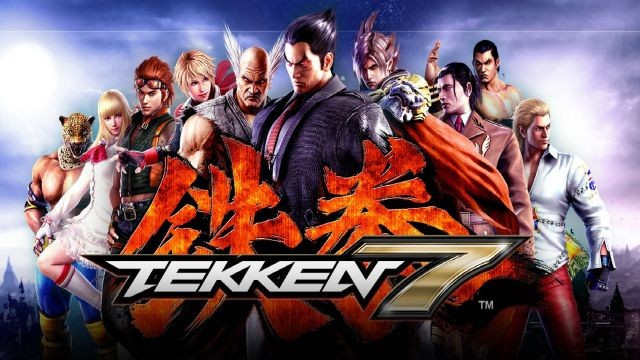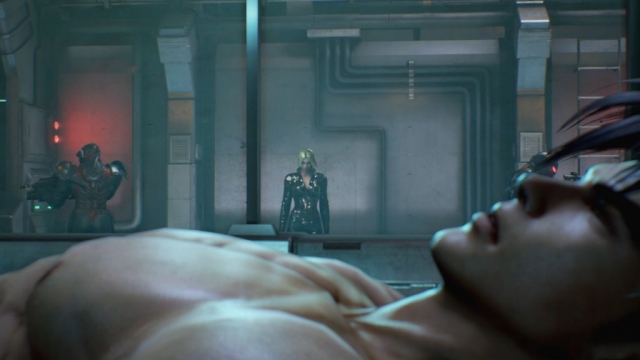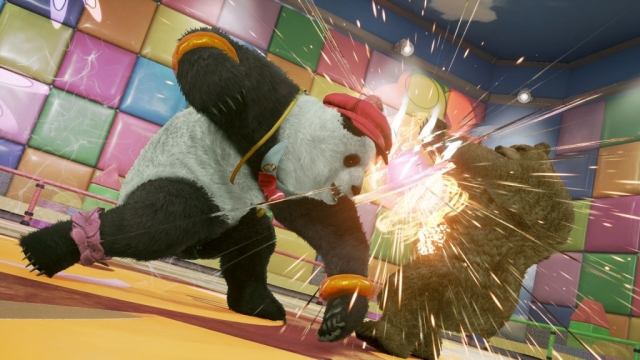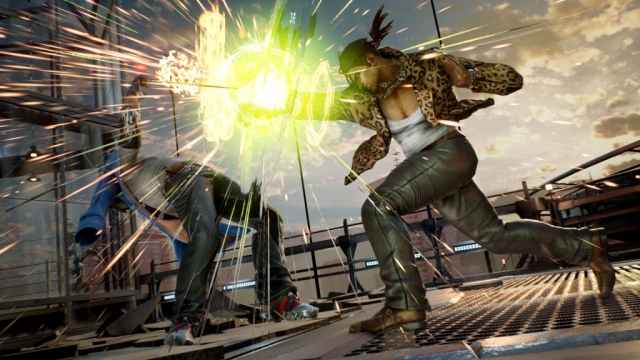Tekken 7

As far as the game itself goes, Tekken 7 is in good shape. It’s Tekken, after all, and it’s mostly iterating on what’s now a successful formula. A complete novice can be doing impressive stuff within five minutes of picking it up, and advanced players can pick up some of the more technically demanding characters if they want to show off. This has been one of the most popular fighting-game franchises on Earth for a reason, and it’s still one of the best games out there for killing an evening on the couch with your buddies.
I only have two real complaints with it, as a whole, but they’re reasonably big ones. One is that Tekken, as a franchise, has often been defined by big, feature-rich home releases, complete with extra gameplay modes, healthy customization options, and unlockable characters. In the base game for Tekken 7, they’ve included very little of that, and much of what’s there feels unfinished.
My other complaint comes from the story mode, which concludes the story of Kazuya and Heihachi Mishima’s long-running feud. It’s short, unfocused, and genuinely weird, with little sense of continuity or even basic scene-to-scene progression; characters fight, fake their deaths, survive fatal attacks for no reason, transform into demons, have entire conversations where every participant is speaking a different language, and launch nonsensical plots against one another until the whole thing crashes to a stop. All of this is narrated by a nameless, faceless reporter with a voice actor who sounds like he’s ten seconds away from overdosing on sedatives.
That’s not a big deal, really. My primary issue is that the story mode ends with one of the most profoundly irritating bosses in not just the Tekken franchise, but the history of fighting games. One of your “rewards” for beating him is a fight with a boss who might be even worse. Neither of them is a genuine challenge; they’re arbitrarily near-invincible, and beating them has more to do with luck than adaptation.
You also get a bunch of additional character-specific chapters for clearing story mode, each of which consists of a single fight against an opponent who may have been chosen by the developers throwing a dart at a wall, with no particular story progression or relevance. Steve Fox is still, three games later, trying to have a single uninterrupted conversation with his mother Nina; Leo is no closer to unraveling the mystery around her mother; newcomer Josie ends up fighting a bear in a jungle for no real reason. This would be pretty stupid in a relatively plotless game like Virtua Fighter, but in Tekken, much of the draw of its arcade mode has always been the short, well-made endings. It’s baffling.
On the other hand, I’ve been having a lot of fun with the customization system. You can accumulate fight money by playing the rest of the game, including a big payout for clearing story mode, and spend it on various pieces of clothing and accessories for the cast, which includes full control over the color palette. You could make characters look thoroughly ridiculous in Tekken 6, but Tekken 7 takes that to the next level with police siren hats, ’50s greaser haircuts, painfully neon-colored pajama pants, and wrestling trunks. Tekken 7 is a good fighting game, but it’s a great fashion crime simulator, and it’s actually impressive to see some of the terrible things that players have already made with it.
The one point against the customization system is that half the options for each character are locked behind the new Treasure Hunt mode, where you fight an endless procession of AI opponents in exchange for random drops. There’s no way to pursue a specific item, which virtually guarantees you won’t be able to get the gear you want for the characters that you actually play. It’s a random number generator disguised as content.
Tekken 7 has been in the works for a long time now, to the point where I saw it showing up at the local tournament circuit last year. Now that it’s finally out on store shelves, despite the wait, it still feels like it wasn’t quite ready for release yet. It’s feature poor, plagued by long load times (especially on the Xbox One), and some of its production values feel downright amateurish.
As far as the fighting itself goes, it’s polished, stylish, and easy to learn. It’s still Tekken underneath it all, with all that implies; if the past games in the series didn’t impress you, especially the last two, this isn’t the one that’s going to change your mind. If you’re coming in cold, it’s a dorm room classic for a reason, with an initially shallow learning curve, some newbie-friendly characters on the roster, and a wide variety of distinct fighters, including two robots and a bear, and all of whom can be made into technicolor nightmares on a whim.
Modern game production being what it is, I’m sure some or all of this will be remedied in time, and whatever Game of the Year edition comes out in six to twelve months will feel like a more complete product. Right now, off the shelf, Tekken 7 is a 90%-ish game when you’re playing with friends or turning your favorite character into a bright orange devil clown, but everything else about this home release is weak to the point where it would have almost been better to not do it at all. Other franchises can almost get away with releases like this, but in Tekken, it’s a massive step backward.
Reviewed By: Thomas Wilde
Publisher: Bandai Namco
Rating: 80%
——————————————————————————–
This review is based on a digital copy of Tekken 7 for the Xbox One provided by Bandai Namco.
 Game Over Online
Game Over Online











